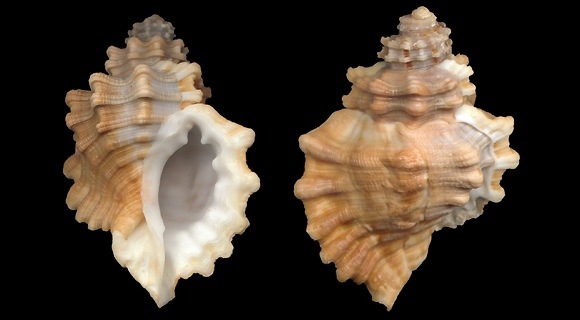
Azores and Madeira to W. Mediterranean, to South Africa; rarely reported from southern Adriatic and E. Mediterranean (S. Turkey, Cyprus); occasionally found in Galicia; some spots in Brittany (Bay of Brest; Groix-Glénans on maerl bed with strong floods at 15-25m deep); reported from English Channel by Jeffreys (Guernsey, Herm). Predator in infralittoral bottoms, down to circa 100m deep.
Protonym: Murex cutaceus.
Above, a specimen from Savona, Liguria, NW. Italy. 57mm.
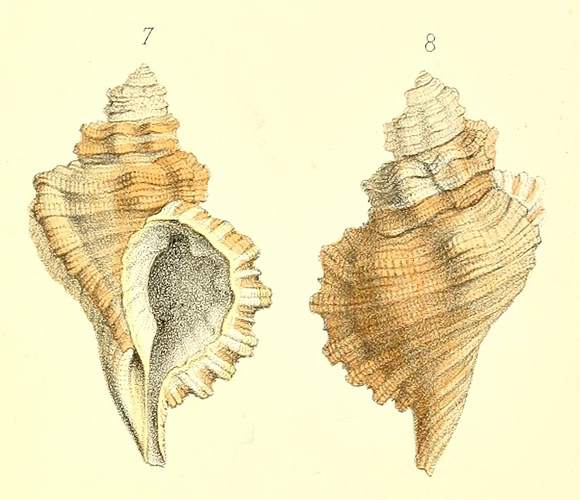
« Shell ovate, rather flatly compressed, with four or five tubercled varices; spire obtuse; whorls irregularly convoluted, angulated at the upper part, armed with two rows of large tubercles beneath the angle, transversely ribbed; ribs, except in passing over the varices, almost obsolete, crenulated; yellowish bay-colour, covered with a horny cuticle; columella white, smooth, furnished with a small callosity at the upper part; canal short, deeply umbilicated; interior of the aperture white; lip undulated, more or less denticulated within. » – L. A. Reeve: Conchologia iconica vol. II, London 1843, plate XI.
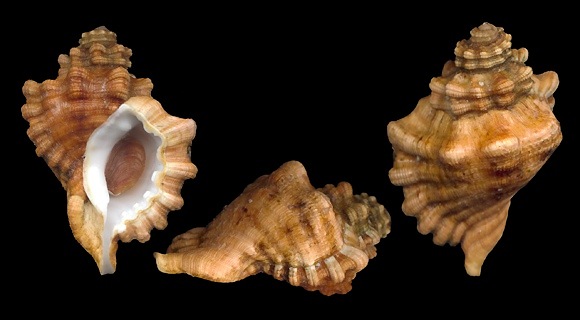
dolaria, costata, lemania, succinctus, tabulata, tuberculata… Specimen with periostracum collected at 8m deep, on gravel and stones, Ghjunchitu bay, Isola Rossa, NW. Corsica, 47mm.
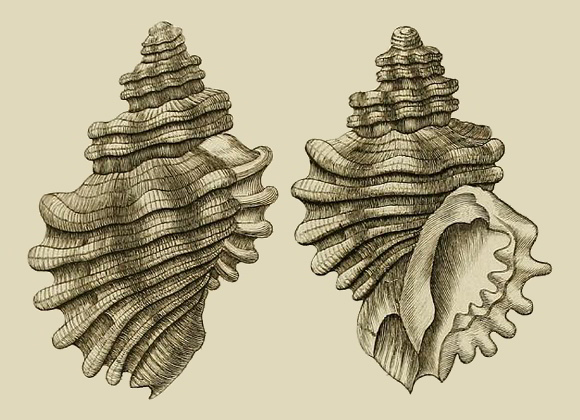
Linné gives the following description:
« Testa varice solitaria, nodis angulata subrugosa, apertura dentata, columella perforata. » (Syst. nat. 1767, I, 2, p.1217).
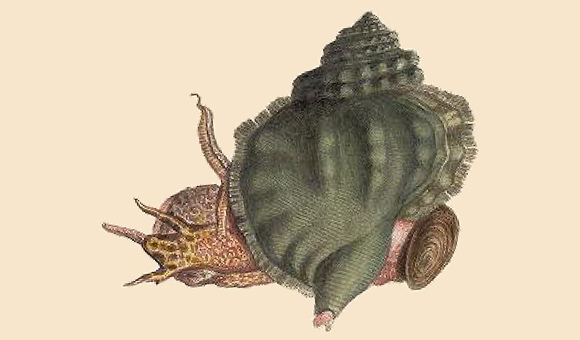
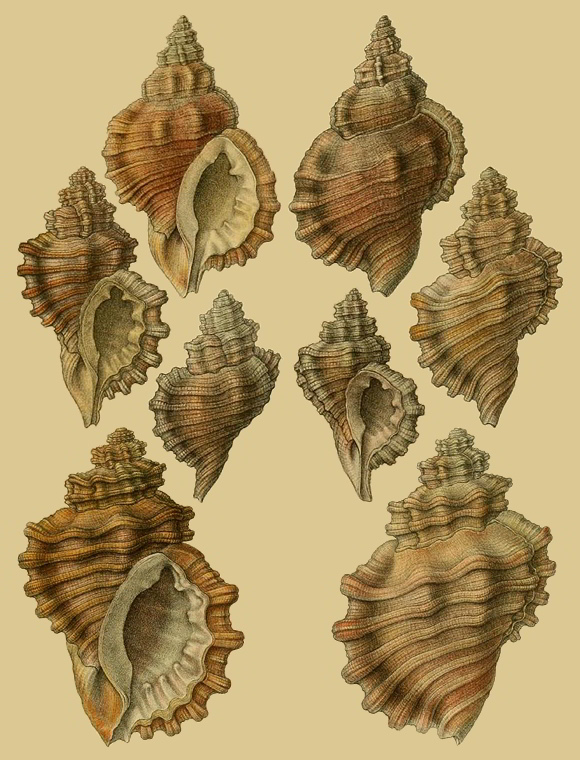
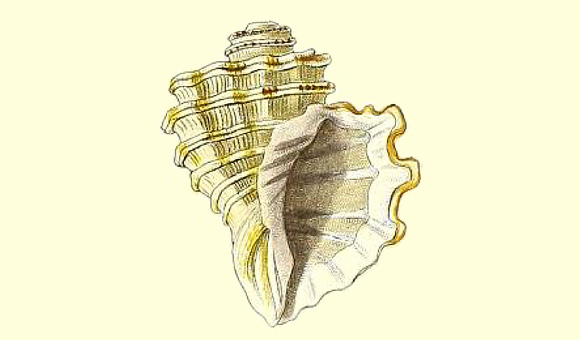
System. Conch.-Cab. Bd.3:Abt.1, Nürnberg 1858, plate XXIVa.
« Testa umbilicata, irregulariter ovata, tenuiuscula, cinereo-flava, opaca; spira breviuscula, anfractibus superne depresso-planatis, biliratis, medio bicostalis, ultimo sexostato, costis seriatim nodulosis, tribus superioribus bipartitis, subsquamulosis, reliquis simplicibus, interstitiis longitudinaliter elevato-lineatis, sublacunosis; apertura ovata, alba, labro expansiusculo, columella alba, superne plica callosa munita. » The periostracum shows here a new feature: hairy lines along the major varices (see Poli’s figure supra).
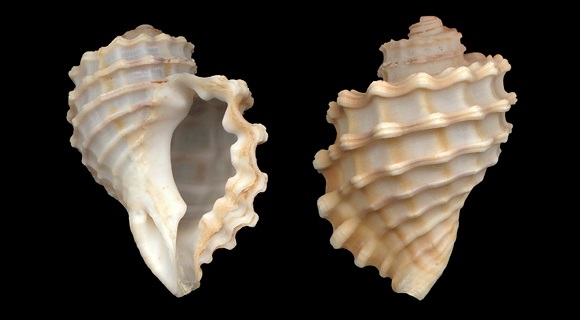
Murex dolarius: this form occurs from western Italy to South Africa, where it progressively replaces the usual morph from the northern waters. In Canarias, both variants are commonlly encountered, as well as their intergrades.
Beachstormed specimen near Salé, N. Morocco. 40mm.
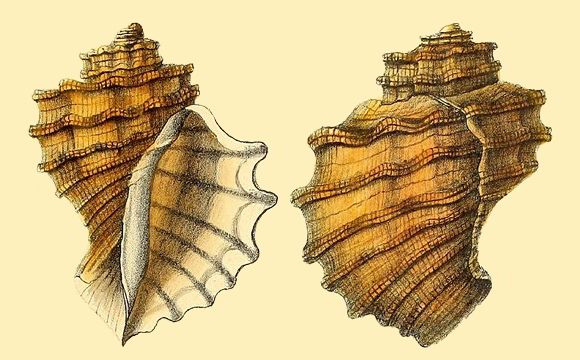
« This species is very close to the related mediterranean Tr. cutaceus, and differs actually only by the blunt thread and by the lack of varices, – but sometimes also in Tr. cutaceus they are unclear. Küster has a young specimen for Risso’s Purpura tuberculata, which is certainly a young cutaceus… »
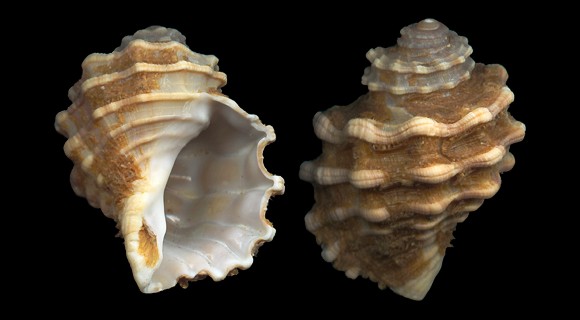
Intertidal, between Casablanca and Agadir, W. Morocco. 35mm.
Specimens of this african form have a thinner shell than those from Mediterranean (where intergrades, however, do exist). This could explain why many authors suspected dolaria to be nothing but a young form of cutacea.
Specimens of this african form have a thinner shell than those from Mediterranean (where intergrades, however, do exist). This could explain why many authors suspected dolaria to be nothing but a young form of cutacea.
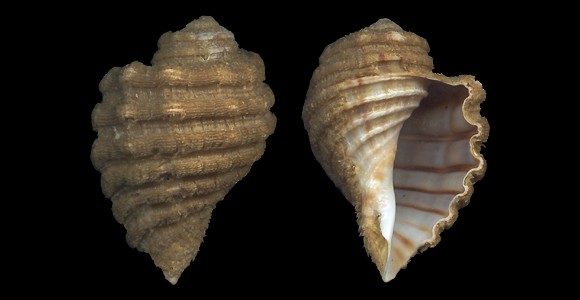
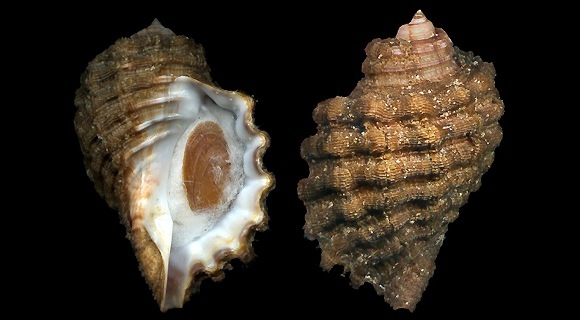
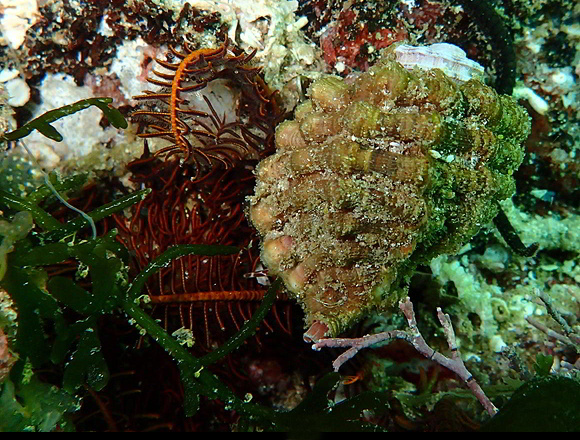
Original picture provided by P. Southwood for iNaturalist.
– (CC BY-SA) –